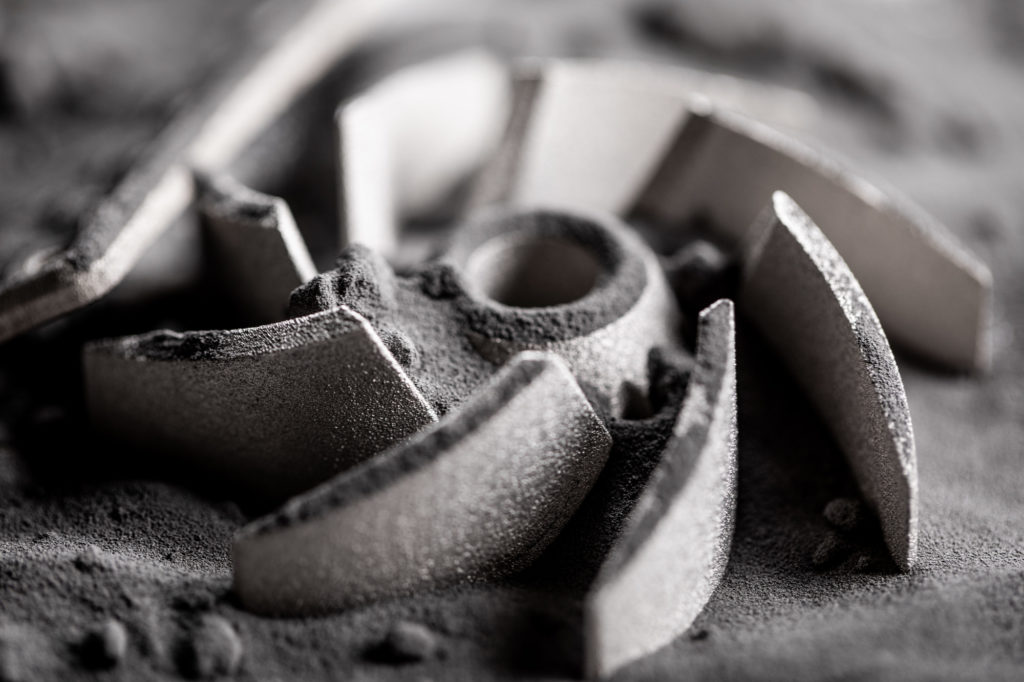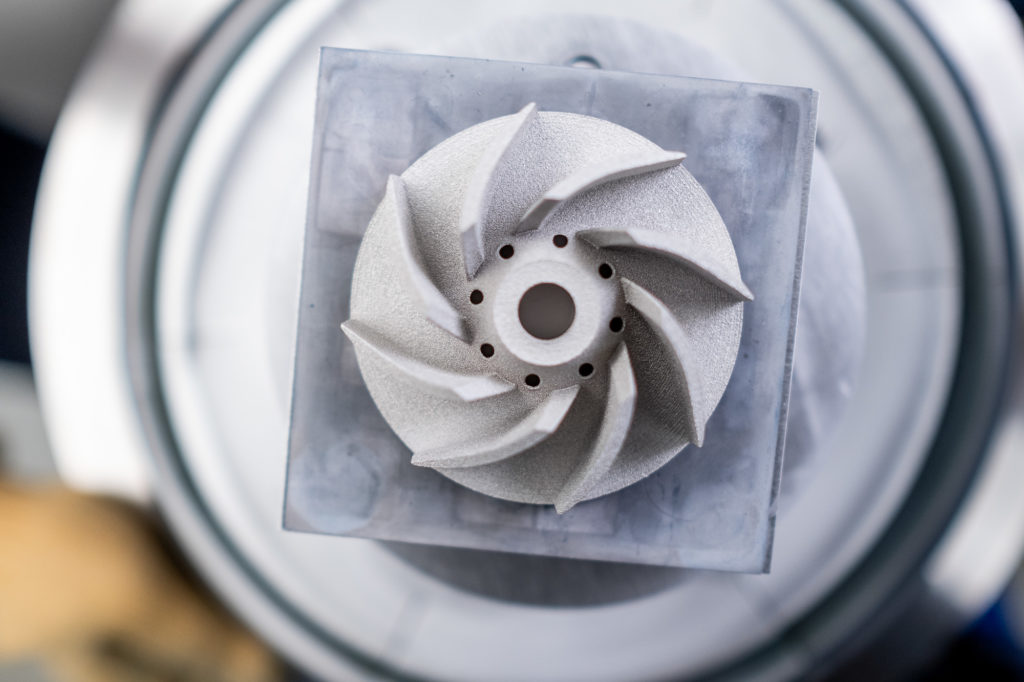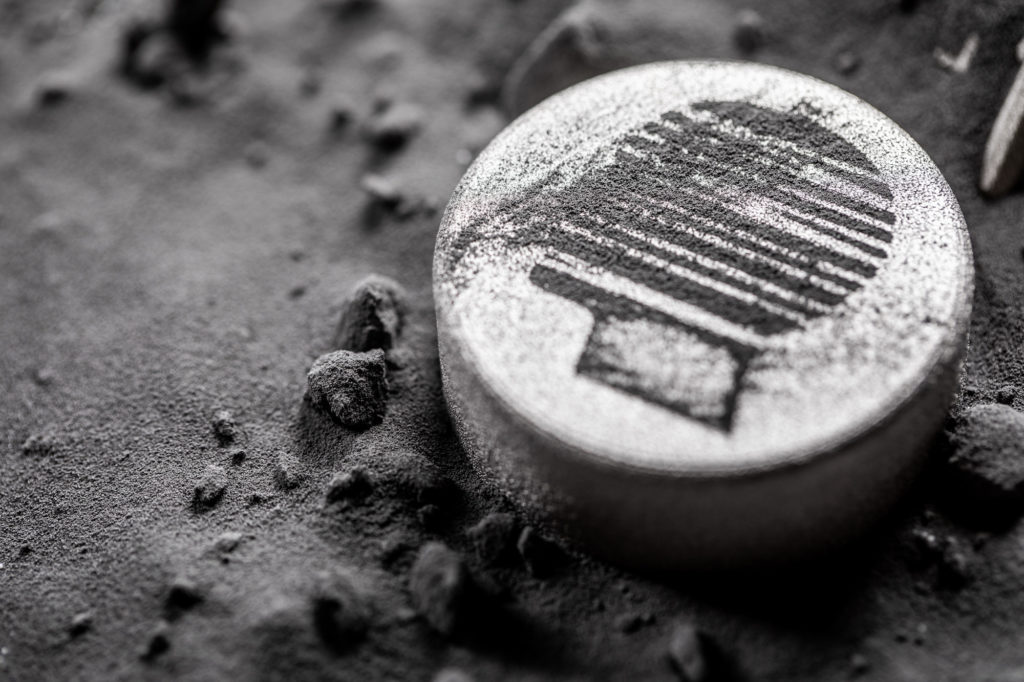Most of the time, when a company says it is developing a 3D printing technology, one often thinks directly of “the development of a 3D printer”. This was the mistake we made when we heard about Headmade Materials and the intriguing way they made this metal 3D printed pedal. Headmade Materials is not a 3D printer manufacturer, yet, the 3D printing technology the company develops is one of the most interesting we have ever seen on this market – for materials production.
This technology is called Cold Metal Fusion (CMF) – a concept that was born when the co-founders were still working in a local polymer research institute Das Kunststoff-Zentrum (SKZ). The whole story started about five years ago with cofounders Christian Staudigel, and Christian Fischer.
Some may call it luck, but I would say dedication to their project – which focused on processing of highly filled polymers and laser sintering process at the time –, work and most importantly, performance of their technology help move the concept at a fast pace, from a R&D stage to a commercial one – in less than five years.
“We already had a very good first feeling after the first shoot where we realized a high density of 96%. But it took us months to dig deeper in the market and to find out the pains and gains potential customers had. After we had relatively easily found larger pilot customers, we realized that our process really serves a market demand”, Staudigel tells us in the middle of a conversation.
So, what is this concept that can achieve a high density of 96% with parts?
The Cold Metal Fusion technology is a sinter-based 3D printing technology that can print metal parts. Designed for serial production, this solution combines the worlds of SLS with the standard Powder Metallurgical processes for debinding and sintering and can help manufacturers achieve over 100,000 parts/year.
“In our Cold Metal Fusion Technology our unique feedstock material, consisting of metal powder and binder, is processed on laser sintering machines for polymer to obtain a green part. Afterwards the greenpart is debinded and sintered to complex metal parts in standard Powder metallurgical processes”, our guest in this Opinion of the Week explains.

What’s particularly interesting here is that both SLS and powder metallurgy have a proven record in delivering quality results in manufacturing operations. Yet, the team at Headmade Materials has found a way to enhance and combine both methods by integrating a feedstock material to the game, which does not require any other process or machine adjustments. In this vein, one of the very first benefits, one can expect is the availability of a wide range of materials options. As a matter of fact, Stainless Steel 316L , Cobalt-Chromium, Titanium Ti6Al4V, Titanium CP-Ti Grade 1 and Tungsten alloys are already available in Headmade’s portfolio. Stainless Steel 17-4PH, Tool Steel with a high hardness without thermal post-treatment, Copper-alloy for high thermal and electrical conductivity as well as Super Alloy should follow in the upcoming weeks or months.
Although most of their experiences are done on EOS Formiga P110 and Sintratec S2 machines that they have in-house, the Managing Director explains that the production of metal 3D printed parts can be done on a wide range of laser sintering systems. Furthermore, no build plate and support structures are required for the 3D printing process as we used to see in powder-bed fusion processes.
Other features that may raise manufacturers’ interest in this technology are the process compatibility to MIM debinding and sintering processes, its ability to enable low processing temperature, thus saving heating time and energy and removing the need for further post-printing heat-treatment; as well as the part characteristics ( in terms of density, yield strength, tensile strength, elongation) it can meet.
“The density achieved with the Cold Metal Fusion-process depends on the material, printing and sintering process but is usually > 98 % for Stainless Steel 316L and up to 100 % for liquid-phases alloys like tungsten heavy metal alloys. By optimising the process steps for each metal part, repeatable densities up to 99 % are possible”, the company explains.
Even though the number of parts that can be built per batch depends on part size and machine size, Staudigel ensures that “one of the cool features of [their] technology is the easy scalability.”
From an application standpoint, the CMF technology can target both operators in the powder metallurgy industry and in the 3D printing industry. This means, all vertical industries like the Medical, Automotive, Aerospace and Industrial sectors, that usually adopt AM technologies can find in Headmade Materials’s solution a valued added proposition.
From a financial perspective, Headmade Materials’s spokesperson notes that their technology remains “cheaper than SLM. Compared to SLS where the operator achieves plastic parts at the end, Cold Metal Fusion is an interesting alternative for metal parts, especially for those who are looking to move from prototypes and very small series to larger quantities.”
“Our CMF process is more complementary to SLM than a direct alternative. We provide industries with a sinter-based approach which delivers the advantages of SLS printing. The part spectrum as well as the field of use is usually much different to SLM. At the end of the day, our technology delivers a higher quality and more economical alternative to Binder Jetting technologies”, he reminds.
What’s next in the pipeline?
The company secured €1.9 million in funding via venture capitalist firm btov Partners last year and is now looking to scale up their business.
“We started with two people two years ago and now we now have a team of 10 people. We are growing fast and we have to grow further. On a technical perspective, we will release in the upcoming weeks new alloys, new products features which are unique in the 3D printing industry”, Staudigel concludes.
Remember, you can post job opportunities in the AM Industry on 3D ADEPT Media free of charge or look for a job via our job board. Make sure to follow us on our social networks and subscribe to our weekly newsletter : Facebook, Twitter, LinkedIn & Instagram ! If you want to be featured in the next issue of our digital magazine or if you hear a story that needs to be heard, make sure you send it to contact@3dadept.com








